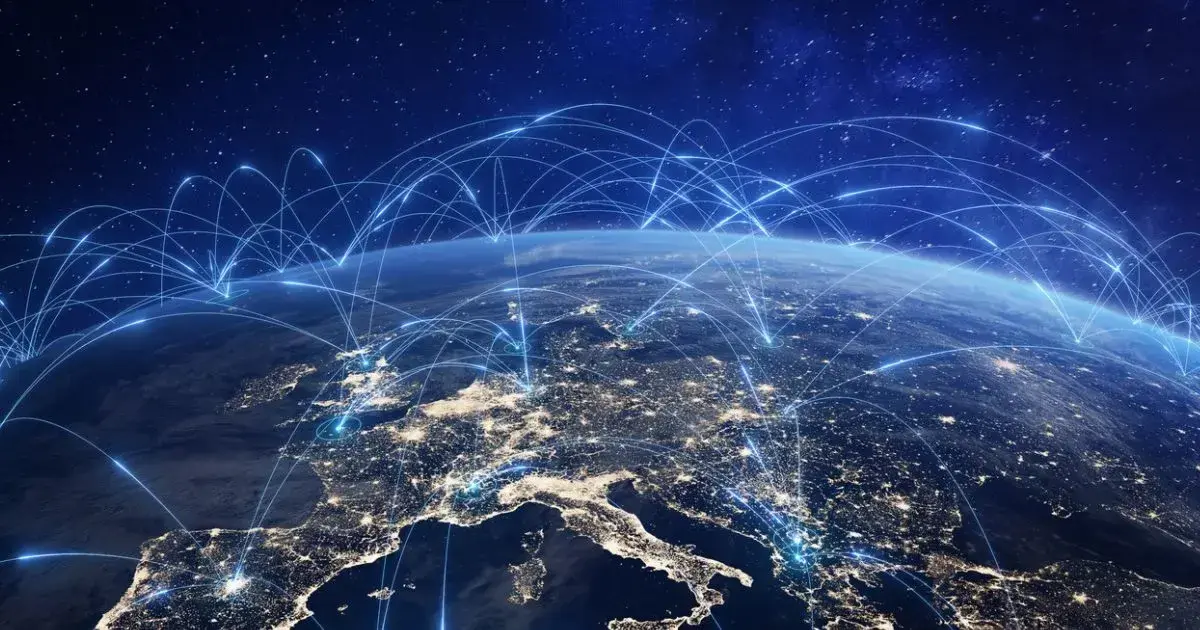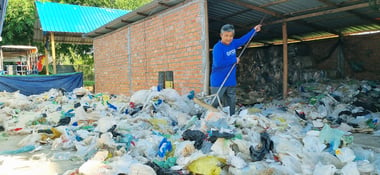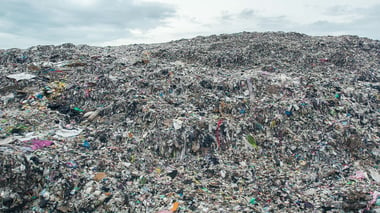
Beth Howell
Beth has been writing about the environment and climate change for over four years now – with her work being featured in publications such as The BBC, Forbes, The Express, Greenpeace, and in multiple academic journals.
When you think of artificial intelligence (AI), your mind might jump to sci-fi movies, robots, or even the latest smart device on the market. But did you know that experts are utilizing AI to help save the planet?
Yep, this cutting-edge tech isn't just about convenience or cool gadgets — it's making serious strides in the environmental space, from mapping out deforestation to recovering plastic pollution from precious ecosystems.
So, let’s dive into some of the incredible ways AI is stepping up to protect the environment.
What’s on this page?
01 | How is AI being used to help the environment?02 | AI's negative environmental impact
03 | Summary
How is AI being used to help the environment?
Experts across industries are using artificial intelligence as a tool to help clean up the planet, reduce plastic pollution, lower global emissions, and create greener tech. Although there are tonnes of examples, these are our top picks.
1. Tracking and preventing deforestation
The United Nations (UN) estimates that 10 million hectares of forest are cut down each year — that’s roughly 17 times the size of Los Angeles. Not only does this wipe out precious ecosystems, putting species at risk, but it also increases global emissions.
But experts are now using AI to tackle this issue, and here’s how:
- Deforestation detection — Researchers can now pair AI with satellite images to map out which regions are impacted by deforestation. For example, Scottish company Space Intelligence has mapped more than 1 million hectares of land in 30 different countries using this method. As well as raising awareness of deforestation, this tool can also help track illegal logging practices across the world
- Deforestation prevention — We can’t just rely on tracking existing deforestation. We also need to focus on preventing it from continuing — and that’s why researchers are also using AI to create predictive models that can identify at-risk areas, based on factors like land-use patterns, infrastructure development, and population density. This information can then help people in the industry lead conservation efforts and take action in the areas that need support

2. Making plastic recovery more efficient
The Ellen McArthur Foundation predicts that by 2050, our oceans will contain more plastic than fish. And, to make matters worse, around 85% of plastic waste ends up in landfills.
Cleaning up this mess is a mammoth task. That’s why experts in the industry are using AI to make the process more efficient — including us here at CleanHub.
For example, we’ve integrated AI into our software to automatically review data throughout the collection process. Once a member of the collection team logs an entry into our app (this will include information about the plastic waste recovered, as well as photos for evidence), the AI software notifies us if any inconsistencies are flagged.
Some examples of the flags include:
- Image compliance — This identifies any bare hands and feet in the images, which helps us make sure the waste collection team meets health and safety compliance standards, by wearing the shoes and gloves we provide them. Since introducing this feature, the number of workers wearing shoes, not sandals, increased pretty quickly
- Image weight mismatch — This notifies us if the weight shown on the scale and the weight entered manually don't match up, which is key in making sure our collection data is accurate
- Data weight outlier — This flags all weights outside the expected range for the collection hub. Flagging this issue is extremely important for transparency's sake, and making sure our collection data is accurate
You can learn more about this on our page: How We Use AI in Our Technology.
3. Removing plastic from the ocean
For every person on the planet, it’s estimated there are 21,000 pieces of plastic floating in the ocean. Thankfully, organizations are working to remove this waste from the seas — but locating and monitoring plastic pollution in the ocean is easier said than done.
That’s where AI comes in.
Some companies are making cleanup efforts more efficient by using satellite imagery and machine learning to locate and identify plastic debris in the ocean.
For example, The Ocean Cleanup is a non-profit organization that uses AI to identify and track plastic pollution in the Great Pacific Garbage Patch (a huge pile of plastic floating in the Pacific Ocean).
The organization uses a fleet of autonomous boats to collect data on the location and size of plastic debris, helping to create a detailed map of ocean litter in remote locations.
But AI can do more than just map out plastic pollution — it can also help develop new cleanup technologies.
For example, researchers at the University of California, Berkeley have developed a robot that can swim through the ocean and collect plastic debris. The robot is equipped with a camera and a suction system that allows it to identify and remove plastic particles from the water.
4. Decarbonizing industries
Global emissions have continued to grow over the past century in tandem with industrial growth. In fact, we now emit over 35 billion tonnes of carbon dioxide (CO2) each year, compared to 6 billion tonnes in 1950.
Since industrial sectors generate around 30% of greenhouse gas emissions globally, researchers are assessing how to quickly decarbonize these industries — and here are a few ways AI is supporting them with this task:
- Making supply chains more efficient: AI can analyze complex supply chains and make them more efficient by identifying key opportunities, such as optimizing transportation routes, improving energy efficiency, reducing packaging waste, and minimizing inventory levels
- Improving building efficiency: Businesses can use AI to monitor and control building systems, optimizing energy usage, heating, cooling, and lighting. Machine learning algorithms can also assess occupancy patterns and adjust energy consumption accordingly
- Assessing transportation methods: AI can be used for route planning, traffic management, and fleet optimization to reduce carbon emissions. The software will consider factors like traffic conditions, fuel consumption, and alternative modes of transportation
- Optimizing energy systems: AI algorithms can analyze large amounts of data from energy systems, optimizing generation, distribution, and consumption. This can help countries transition from fossil fuels to cleaner, renewable energy, reducing a huge amount of carbon emissions in the long run
5. Prevent climate disasters
Evidence suggests that the number of climate-related disasters has tripled in the last 30 years, which correlates with the increase in global emissions. From droughts to floods, hurricanes to monsoons, this destructive weather is taking a toll on communities across the globe.
Experts are now turning to AI to get a better understanding of this changing climate and how it'll impact vulnerable communities.
For example, several UN agencies are supporting communities in Burundi, Chad, and Sudan — areas vulnerable to climate change disasters. This AI-driven project will investigate past environmental change around displacement hotspots, and will also deliver future projections that can help these communities take measures and adapt to the changing climate.
AI is also part of the UN Secretary-General’s Early Warnings for All initiative — an action plan that aims to ensure everyone is protected from hazardous weather, water, or climate events through early warning systems by the end of 2027.
Brazilian company Sipremo is another example of how AI can be used to predict climate disasters. Currently working in a variety of industries, such as insurance, energy, logistics, and sports, the company aims to use its software to help businesses and governments better prepare for climate change.
6. Tracking air pollution
According to the World Health Organization, air pollution is the largest environmental threat to human health worldwide, contributing to an estimated 8.43 million premature deaths a year.
For decades, researchers have been tracking air pollution levels using monitoring stations, which require a huge amount of data points. In short, it’s a very time-consuming process.
And that’s exactly why engineers at Cornell University have invented a simplified model to track air pollution. The system uses inputs, such as traffic data, topology (a branch of geometry), and meteorology (the study of the atmosphere) in an AI algorithm to learn simulations for a wide range of traffic-related air pollution scenarios.
This means city planners and government health officials can now have a better understanding of the air locals breathe.
7. Recycling plastic waste
According to the OECD, scientists believe just 9% of the world’s plastic is recycled. This is a global issue that needs to be addressed if we want to work towards a more circular economy.
Here are the latest AI innovations revolutionizing the recycling industry:
- Smart recycling bins: These AI-powered recycling bins can help people recycle the correct items by using sensors and cameras to detect the type of waste deposited. WasteNet is an excellent example of how effective this tech can be, achieving a prediction accuracy of 97% and classifying waste into six categories: paper, cardboard, glass, metal, plastic, and others.
- Efficient waste recovery: London startup Greyparrot has developed an AI system that analyzes waste coming into recycling facilities to help recover and recycle more waste material. The company tracked 32 billion waste items across 67 waste categories in 2022 alone
- Recycling robots: London-based AI company Recycleye has designed a robotic picking system, designed to make sorting dry, mixed recyclables easier. The company currently has 30 AI-powered robots contracted across the UK and Ireland, 19 of which are already installed, as well as more installed across other areas in Europe
8. Reducing fast fashion
As fast fashion trends continue to gain popularity, the amount of waste the sector accumulates piles high. In fact, the clothing industry now produces 92 million tonnes of textile waste each year.
There is a long way to go before we make this industry truly sustainable, but some businesses have started taking steps in the direct direction — and AI is supporting them in this transition.
AI can improve operations and supply chain processes by optimizing inventory management and predicting sales based on historical data. This will be key in preventing brands from overstocking clothes and sending wasted materials to landfill.
Fast fashion harms the planet in a multitude of ways, but customers returning items is up there with the worst of them. In fact, up to 24 million metric tons of CO2 emissions are attributed to ecommerce returns each year.
Thankfully, AI can help in this department too.
For example, AI 'try-on' solutions allow customers to see how clothes will look on them, without having to physically try them on — reducing return rates and emissions. This feature is already up and running in various companies, such as prescription eyewear retailer Warby Parker and Amazon.
9. Supporting the transition to renewable energy
Fossil fuel consumption has increased around eight-fold since 1950, and has been proven to drive climate change and global warming. That’s why industry experts are encouraging nations to switch to greener energy, such as wind, solar, or hydropower. And, you guessed it, AI is helping us with this transition.
This isn’t a new partnership either. In fact, a recent estimate suggests that AI already serves more than 50 different uses in the energy system.
One of the most common uses for AI in the energy sector is to improve supply and demand predictions. Renewables like solar and wind are intermittent (given it’s not always sunny or windy), which has hindered its progress in the past. However, now AI can help researchers have a better understanding of when renewable power is likely to fluctuate.
For example, wind power output can now be forecast using weather models and information on the location of turbines. AI algorithms can also determine the best times to store energy — another key challenge in the industry.

AI's negative environmental impact
So, AI is great for the environment then, right? Well, not exactly.
Although AI has a lot to offer when it comes to helping the planet, it also has a negative impact on the environment — and here's how.
Carbon emissions
AI systems generate a huge amount of emissions, which mainly comes down to the energy needed to train and run the models. In fact, the amount of computing power required to train AI models has doubled every 3.4 months since 2012, according to OpenAI.
A recent study also found that training these models can produce about 283,948 kilograms (kg) of carbon dioxide — the equivalent of around 300 return flights from New York to San Francisco, or nearly five times the lifetime emissions of the average car.
Water consumption
This one is more surprising, but AI tech gets through a lot of water — a limited resource that we’re already wasting too much globally.
The energy used to power the servers generates a lot of heat, which means these machines have to be cooled down using huge amounts of water. Just how much water? It’s estimated to be enough to fill 2,500 Olympic-sized swimming pools per year.
For every 20-50 questions asked, ChatGPT requires 500 milliliters (ml) of water — about as much as a standard water bottle.
To make matters worse, researchers at Cornell University have predicted that AI demand could be accountable for more than the total annual water consumption of half of the United Kingdom.
Could speed up oil and gas extraction
As well as supporting the renewable energy industry, AI is also being used to boost oil and gas extraction — something that will exacerbate climate change.
Shell recently announced that it will use generative AI to speed up oil and gas exploration as part of its broader strategy to “improve safety, efficiency, and sustainability across its operations”.
AI solutions provider SparkCognition claims that the machine learning algorithm will achieve “potentially increased production and higher success rates”, meaning it could find previously untouched fossil fuel resources on the ocean floor in as little as nine days instead of nine months.
E-waste
Globally, we generate an estimated 62 million tonnes of e-waste per year — about the same weight as 5.6 million double-decker buses.
And as AI tech becomes more popular in the coming years, this level of e-waste will explode. The World Economic Forum (WEF) projects that, by 2050, the total amount of e-waste generated will have surpassed 120 million metric tonnes.
Summary
When it comes to the environment, AI is a double-edged sword. On the one hand, it can help us overcome some of the biggest issues troubling the climate — but on the other, it can be a part of the problem.
Moving forward, we need to continue utilizing this impressive tool in the right ways: reducing ocean pollution, supporting conservation efforts, and improving recycling processes.
But we also need to find ways to power these machines with a much lower impact on the planet — and fast.













